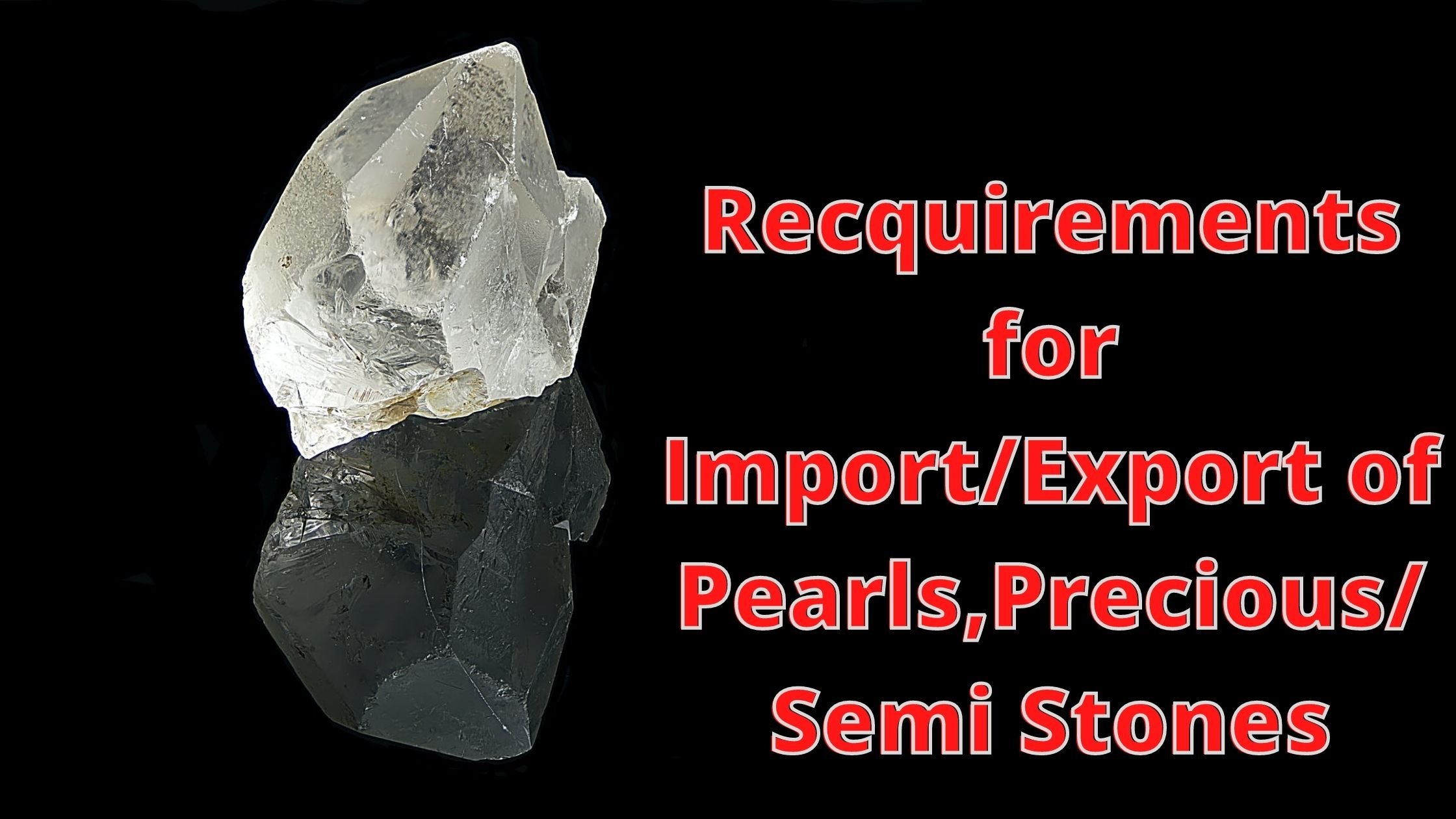Legal Requirements for starting the Import/Export of Pearls, Precious and Semi-Precious Stones
India holds a very beneficial position in the import and export market in the world. Its geographic location allows it to act as a centre for the global market. It acts as a gateway between Middle East and South East Asia thus allowing several importers and exporters to find a stable business in India. The operational costs and the support provided by the Indian government acts as another major reason for a majority of importers and exporters to expand their businesses in this country. The massive unified market is accompanied by well-established trade market flows and steady government policies.

Legal Requisites for starting the Import or Export of Pearls, Precious and Semi-Precious Stones
India holds a very beneficial position in the import and export market in the world. Its geographic location allows it to act as a centre for the global market. It acts as a gateway between Middle East and South East Asia thus allowing several importers and exporters to find a stable business in India. The operational costs and the support provided by the Indian government acts as another major reason for a majority of importers and exporters to expand their businesses in this country. The massive unified market is accompanied by well-established trade market flows and steady government policies.
The import and export of precious stones in India occupies a major role. India is one of the largest importers of precious stones accounting for $59.6 billion worth of imports in the fiscal year 2016. The imports of gold and other precious stones have increased rapidly because of the growing consumer demand for it. Indians purchase jewellery for a variety of reasons, one of them being investments. They consider gold as one of the safest investment options thereby increasing its demand. Exports, on the other hand, account for $24.6 billion per year.
In India, the Import Export Code number (IEC) is mandatory before starting the procedure. It is a 10-digit code number given by the regional office of the Director General of Foreign Trade (DGFT), Department of Commerce, Government of India to an importer/exporter to operate the business. Once an online registration of the IEC along with the fees is done, the documents have to be submitted physically within 15 days of its online submission. This is a one-time registration process in which the code is valid for a lifetime, however, certain terms and conditions may be altered as per the rules and regulations of a country. The importer of Pearls, precious and semi-precious stones is needed to contact government agencies of their importing country to verify whether such one-time registration is required or not. However, the IEC requires a bank account and an Income Tax PAN number, without which the registration remains incomplete. Along with the IEC number, the 8-digit Indian Trade Classification (ITC) code assists exporters and importers in India to use government and non-government agencies. The code is divided into two schedules where the first one deals with the eight digit nomenclature, whereas, the second schedule deals with description of goods chargeable to export duty. It is also known as the ITC HS code i.e. Indian Trade Classification based on Harmonised System of coding because it is a modification of the HS code.
Any knowledgeable exporter or importer in the field should know the HTS code (HS Code) of their product, as it helps them to identify product classification code fixed differently in each country like Schedule B, ITC, HS, HTS, Tariff Code etc. It also helps the exporters and importers of precious stones to identify their product for use in customs departments and other governmental or non-governmental agencies.
Every country has their own foreign trade policies for import and export of pearls, precious and semi-precious stones. However, most of the countries have similar Hazardous Waste Management, handling and transboundary movement rules. Permission to import and export such stones should be in regards with the environment department. Ministry of Environment and Forest (MOEF) in India is the authorised government agency to regulate such materials including importation. The movement of goods under hazardous wastes management, handling and transboundary has to be along with form 9. A certificate from the Pollution Control Board is another important document that needs to be attached with the other requirements for the export and import of rough diamonds. Some of the products might be prohibited because of the environment pollution policies, and hence those products are cross-checked by the other party before placing any orders.
The KPC, or the Kimberly Process Certificate, is another document that is issued mainly for the import and export of rough diamonds. It prevents conflicts by ensuring the purchase of diamonds to be non-violent and against any rebel movements. Thus, the illicit international trade in rough diamonds and armed conflict are controlled, thereby maintaining security, peace and sustainable development in all the countries. As a part of several key commitments, the Kimberly Process Certificate Scheme (KPCS) includes a requirement that all imported and exported rough diamonds be certified. In India, GJEPC (Gem and Jewellery Export Promotion Council) is the government agency to issue Kimberly Process Certification.
Unilateral, multilateral or bilateral trade agreement amidst countries simplifies documentation and other formalities and processes for export of pearls, precious or semi-precious stones. The importers and exporters have to collect precise information from appropriate government agencies before import or export of pearls, precious and semi-precious stones. The documentation needed for imports and exports may vary from country to country depending on the products to be sent or received. This documentation and other legalities play a very crucial role and must be observed closely.
By:-
Ridhika Kapoor












